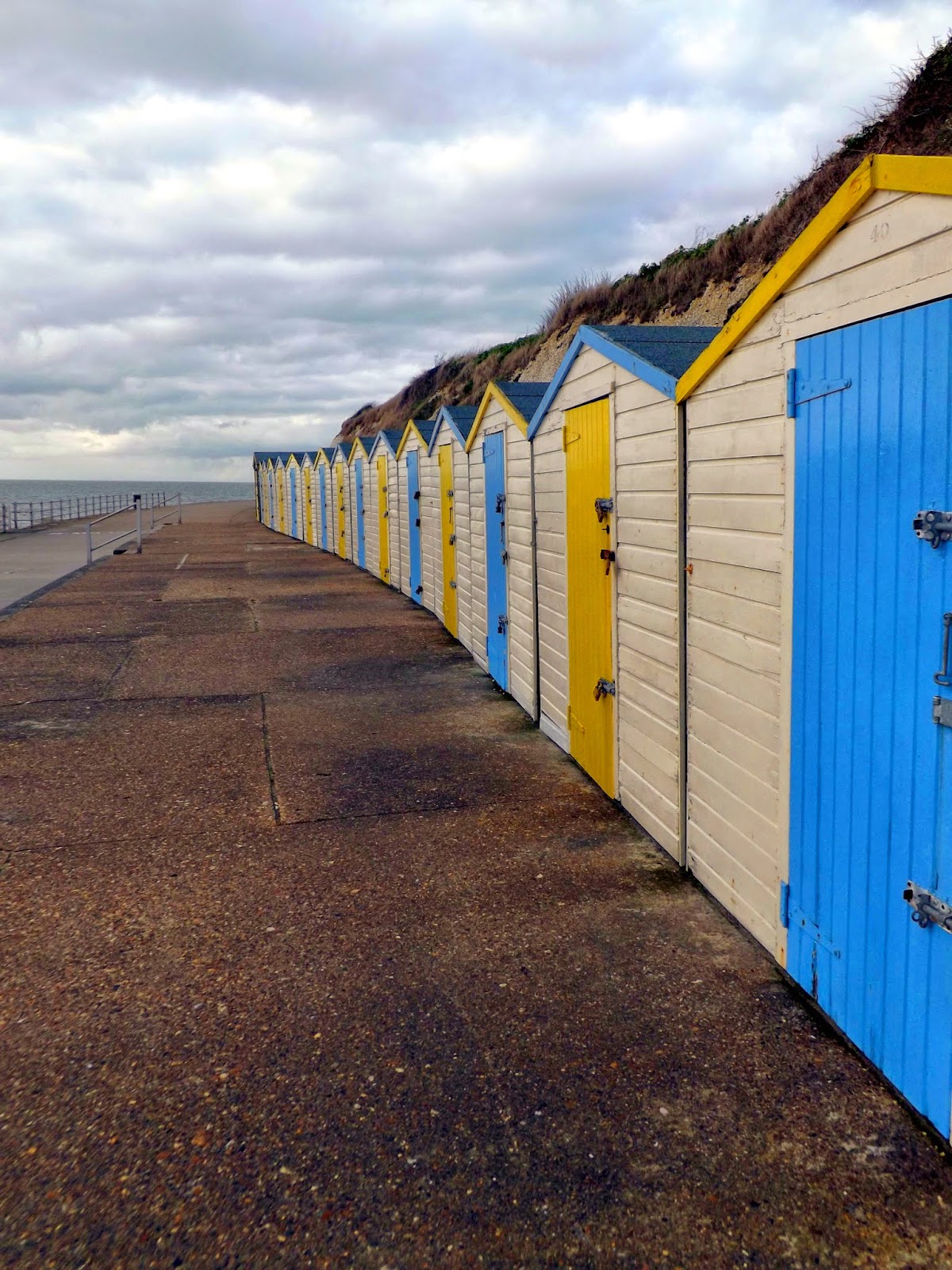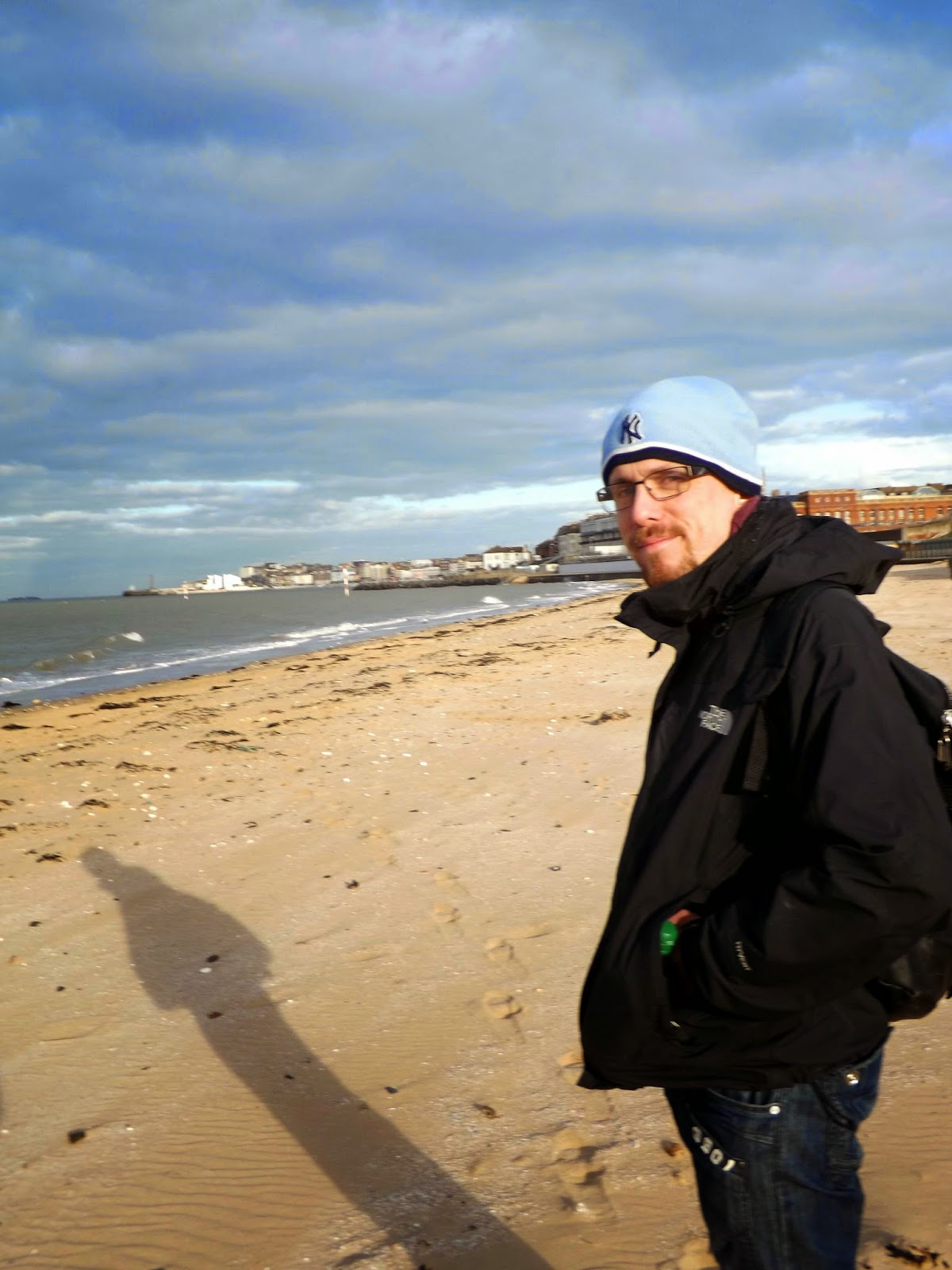I remember Herne Bay from years ago when the pier was whole, now just a short stub out to sea with original end of the pier sitting out alone in the sea.It was destroyed in a storm in 1978 and dismantled in 1980.
We made our way along the sea front and came across a wooden aeroplane that acted as seats and a bench and a nearby notice that drew reference to a Amy Johnson.
On Sunday 5 January 1941 British record-breaking aviatrix Amy Johnson died serving her country off the shores of Herne Bay, Kent, England.
Flying solo or with her husband, Johnson set numerous long-distance records during the 1930s. Johnson flew in the World War II as a part of theAir Transport Auxilary when she died during a ferry flight.
Herne Bay still remains to be a pleasant sea resort well worth a visit, unlike many seaside towns this is still clean and retains the tradational feel. Shame about the pier, be nice to have it rebuilt perhaps from lottery grants.
 | |
| Shame about the mindless graffiti |
 |
| Talk Of The Town Club |
We kept walking but seemed to be getting no nearer the towers, it was as if someone was moving them. They were further than we anticipated!
We take the only climb on the whole walk up the cliffs into Reculver Country Park. From the concrete path there runs a well trodden path through the grass. This seemed like a short cut as it heads straight towards Reculver. Don't be fooled stay on the concrete path this leads you to a deep ravine in the cliff and we had to walk through a wooded area on a muddy path to rejoin the concrete path.
We then cross over ther ravine on a wooden bridge.
 |
| Looking back to Herne Bay |
 |
| As far as we go, a deep Ravine blocks our way. |
During the Second World War the coastline east of Reculver was used to test prototypes of Barnes Wallis's bouncing bomb. This area was chosen for its seclusion,while the clear landmark of the church towers and the ease of recovering prototypes from the shallow water were probably also factors. Different, inert versions of the bomb were tested at Reculver, leading to the development of the operational version known as "Upkeep". This bomb was used by the RAF's 617 Squadron in Operation Chastise, otherwise known as the Dambuster raids, in which dams in the Ruhr district of Germany were attacked on the night of 16–17 May 1943 by formations of Lancaster bombers. On 17 May 2003, a Lancaster bomber overflew the Reculver testing site to commemorate the 60th anniversary of the exploit.
Two prototype bouncing bombs, about 6 feet (2 m) long and 3 feet (1 m) wide, lay in marshland behind the sea wall until about 1977, when they were removed by the Army. Other prototypes were recovered from the shoreline in 1997, one of which is in Herne Bay Museum and Gallery, a little over 3 miles (5 km) west of Reculver. Others are on display in Dover Castle and in the Spitfire & Hurricane Memorial Museum at the former RAF Manston, on the Isle of Thanet.
We are now finally nearing the Towers as we continue through the country park.
The new portrait bench just outside Reculver? It’s the brainchild of Canterbury City Council, who allowed the public to choose the three images who would represent the area’s culture and history. The winners were (from left to right) a woman in Roman dress, an oyster fisherman, and Dambuster pilot Warner (“Bill”) Ottley, who flew AJ-C on the Dams Raid and was shot down near Hamm. Bill Ottley’s family lived in Herne Bay, which is the local connection to the portrait bench. Although he was only 20, he had already completed a tour of operations in 207 Squadron, and been recommended for a DFC.
An imposing landmark, the twin 12th-century towers of the ruined church stand amid the remains of an important Roman 'Saxon Shore' fort and a Saxon monastery.
Two thousand years ago the geography of this area was very different.
The Wantsum, a sea channel up to 4.8km (3 miles) wide, cut off the Isle of Thanet from the mainland, and the Roman fort of Reculver stood on a promontory at the north end of the channel where it joined the Thames estuary.
Today the Wantsum has silted up and become dry land.
Roman Fort
During the 1st and 2nd centuries a Roman settlement grew up at Reculver, probably around a harbour. The size of this settlement is unknown as coastal erosion has destroyed much of the evidence.In the early 3rd century a fort was built. This was nearly square, with rounded corners, and measured 180 metres by 175 metres (590 feet by 574 feet). Its flint walls were backed with earth ramparts and surrounded by two ditches 10 metres (33 feet) wide. This was one of the very earliest of the forts of the Saxon Shore, built against Saxon raids, and was traditional in its plan.
Religious site
By the 5th century the Romans had abandoned their defence of Britain and the fort at Reculver had fallen into disuse.An Anglo-Saxon monastery was founded on the site in 669, reusing the existing defences, and the church of St Mary was built near the centre of the earlier fort.
Documentary evidence suggests that the site had ceased to function as a monastic house by the 10th century, after which time the church became the parish church of Reculver.
Remodelling of the church in the 12th century included the addition of tall twin towers.
The medieval church was partly demolished in 1805, when much of the stone was reused to construct a new church on higher ground at Hillborough, but the twin towers were left.
They were bought, repaired and underpinned by Trinity House in 1809.
We leave the towers and to your right is what is known as 'The Hatchery'. Native oysters have been fished commercially off Whitstable, Kent in SE England since Roman times.
Today, the company operates from Reculver, eight miles East of Whitstable where the hatchery and several nursery systems are situated. An extensive pond system covering 8 hectares allows the luxury of good water quality management resulting in year round mollusc seed production . Species produced of oyster and clam seed are (Crassostrea gigas, Ostrea edulis, Mercenaria mercenaria, Tapes decussata, Tapes semidecussata). and other species of bivalve mollusc to order.
This was to be the last real thing of any interest for quite a few miles, nothing but a concrete path,marsh land to your right and sea to your left.
 |
| A slight diversion away from the sea around some lakes. |
 |
| Area known as Plum Pudding Island |
We now catch the first glimpse of Birchington On Sea from Minnis Bay.The village was first recorded in 1240. Its parish church, All Saints', dates to the 13th century and its churchyard is the burial place of the 19th-century Pre-Raphaelite artist, Dante Gabriel Rossetti.
Birchington was first recorded in 1240 as Birchenton, a name derived from the Old English words 'bircen tun', meaning a farm where birch trees grow.
 |
| A brave man out Windsurfing on this cold windy day. |
Was hoping to see a pub, but nothing was obvious so we continued on.
 |
| A tad too cold for a shower |
A little way after we walked to Epple Bay and before entering Westgate on Sea. Like so much of Kent with its Chalk cliff faces.
We decided to walk up through the streets above to break up the view for a while, some lovely huge houses up there they were too.
We are now on top the cliff again by The Birchington sign and some road walking for a short stretch before we decend into Westgate On Sea.
Westgate On Sea is notable for once being the location of a Royal Naval Air Service seaplane base at St Mildred's Bay, which defended the Thames Estuary coastal towns during World War I. The town is the subject of Sir John Betjeman's poem, Westgate-on-Sea. Residents have included the 19th-century surgeon Sir Erasmus Wilson and former Archbishop of Canterbury William Temple. The artist Sir William Quiller Orchardson painted several of his most well-known pictures while living in Westgate-on-Sea. The British composer Arnold Cooke attended the town's Streete Preparatory School in the early 20th century, and Eton headmaster Anthony Chenevix-Trench spent the earliest few years of his education in the town.
 |
| Westgate On Sea |
We stopped off for a cup of tea and some lovely Lemon cake at West Bay Cafe. Two cups of tea and two slices of cake for £5.80. Nice cafe clean with friendly staff and a handy stop off to refuel and use the loos.
We walk on round to St Mildreds bay and onto towards Margate.
 |
| Redshanks sheltering and resting waiting for the tide to go out. |
Now we see the end of the walk in Margate, with fresh sand being dumped on the beach by some dumper trucks no doubt in readiness for the summer vistors.
We reach Margate, now for our next trick, to find somewhere to get some fish n chips. Everywhere seems to be closed this time of year. Margate in contrast to Herne Bay seems very run down and dirty. Hopefully when dreamland re-opens this town will get a revival and some renovation it badly needs.
We find Papps Fish n Chips on Belgrave Road and take them across to the seafront to eat.
Although quite cheap at £4.40 for Cod n Chips, these really were the worst we had eaten on the Kent coast so far. Wish I had read some of the reviews on Trip advisor before hand!
One review from Trip advisor
Dirty dirty place will never eat there again. I remember it selling
decent stuff back in the day, now the plates are piled so high on the
front counter, you can't even see who you're talking to when ordering,
the chips were like eating pure grease and the price was just awful
considering the poisonous quality of the food. Might as well buy a
bottle of sunflower oil and down it. I don't think they were even home
made chips just tasted like frozen crap with the crap removed and grease
added........
We left and arrived at Margate Rail Station for a 20 minute wait for the train to take us back to Herne bay. |
| Margate Rail Station |
 |
| Herne Bay |




























































